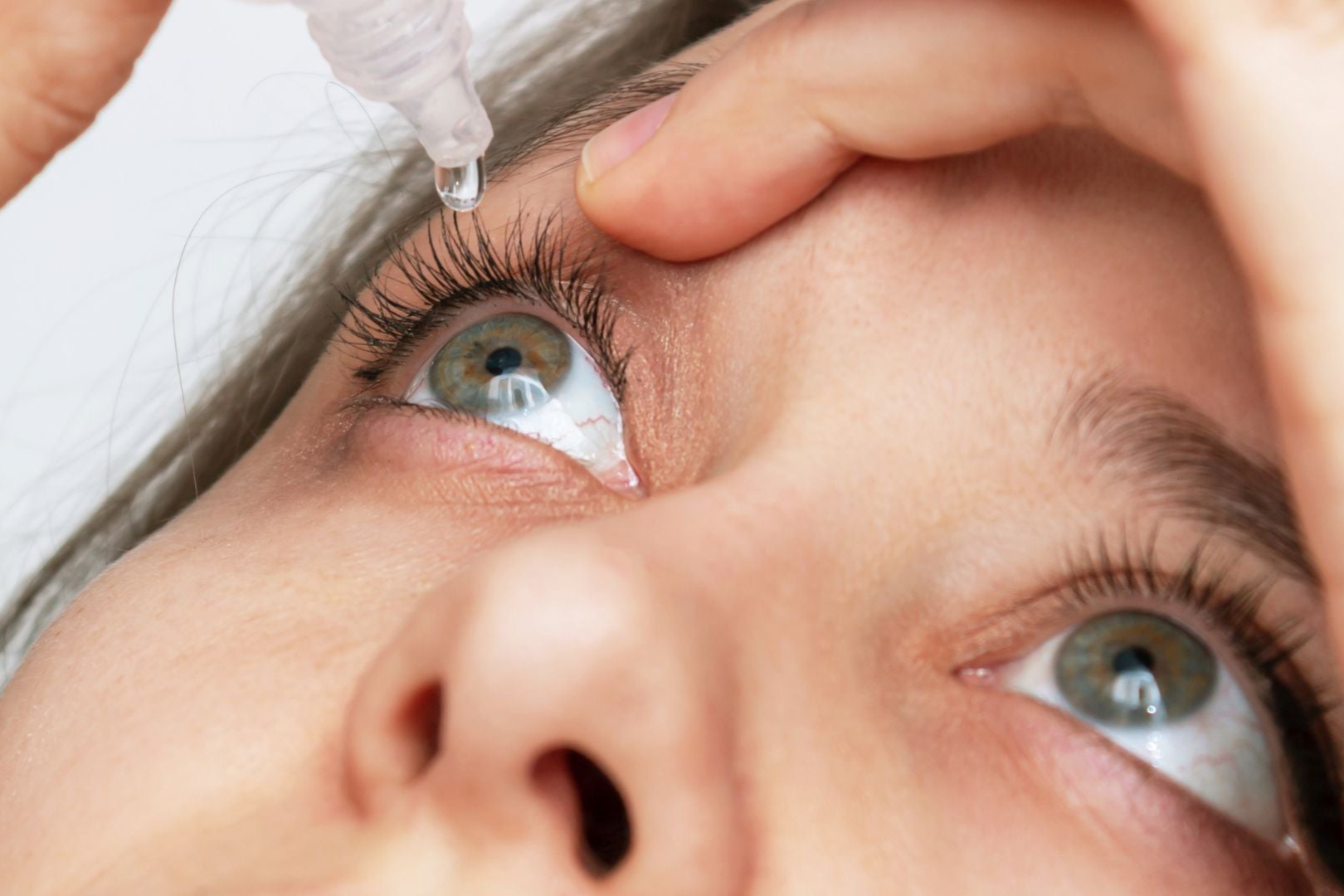About Dry Eye & Ocular Surface Disease
- Poor tear quality (often due to blocked meibomian glands)
- Inflammation in or around the eye
- Reduced tear production (not enough moisture being made)
- Eyelid issues, such as blepharitis, meibomiant gland dysfunction or eyelid malposition
Understanding the underlying cause is the key to personalised treatment—and that’s where we can help. At Illume, we specialise in diagnosing and managing Dry Eye, Blepharitis and Meibomian Gland Dysfunction
Our comprehensive consulations utilise detailed imaging, gland analysis, and evidence-based therapies. Our goal is to identify the root cause of your symptoms and offer a treatment plan tailored to your eyes, lifestyle, and long-term comfort.
Treatment options may include
- Eyelid and ocular surface anti-inflammatory care, including prescription drops, skin mite treatments, or omega-3 supplementation
- Tailored home care routines, including heat masks, lubricant eye drops, lid wipes, blink training, and skincare and make up guidance to protect gland health
- In-practice lid hygiene treatments such as ZEST (Zocular Eyelid System Treatment) to gently cleanse the lids, remove biofilm, and reduce inflammation
- Thermal expression therapies like LipiFlow®, which combines heat and gentle pressure to unblock the meibomian glands
- Low-Level Light Therapy (LLLT) to reduce inflammation, stimulate cellular repair, and support meibomian gland recovery
- Intense Pulsed Light (IPL) therapy to reduce inflammation, improve oil flow, and target underlying skin conditions like rosacea
- Tixel-i®, a non-invasive thermal treatment that stimulates gland activity and improves tear stability
Book a comprehensive Dry Eye Assessment at Illume to find outwhat is contributing to your symptoms—and discover which lifestyle changes, home therapy and advanced therapies are right for you.
“But My Eyes Water All the Time—Can That Still Be Dry Eye?”
Yes, it absolutely can. In fact, excessive tearing is one of the more surprising symptoms of Dry Eye Disease. When your eyes aren’t staying properly moisturised, they can overcompensate by producing a flood of reflex tears. These are more like “emergency tears”—watery and lacking the essential components (like oils and mucins) that help keep the eye surface healthy and comfortable.
This imbalance can be triggered by a variety of factors, including age-related changes, eyelid problems, hormonal shifts, or environmental irritants like wind or air conditioning. So, even though your eyes may be watering, they could still be craving proper hydration and tear film stability.
At Illume Eye Care, we can help determine whether your watery eyes are caused by dry eye disease, poor eyelid positioning, or even a blockage in the tear drainage system (known as the puncta). A thorough assessment allows us to tailor treatment specifically to the cause—bringing comfort and clarity back to your eyes.
What to Expect at a Dry Eye & Ocular Surface Assessment
At your dry eye and ocular surface assessment, we take the time to understand the full picture of your eye comfort and tear film health. Using advanced diagnostic technology, we perform a series of non-invasive tests that help us evaluate the quality, quantity, and stability of your tears, as well as the health of the glands and surface of your eyes.
Here’s what’s typically included in your assessment:
- A discussion of your symptoms, lifestyle factors and what you've tried before.
- Non-Invasive Tear Breakup Time (NIBUT): Measures how long your tear film remains stable after a blink—essential for detecting early tear instability.
- Tear Meniscus Height: Assesses the volume of your tears at the edge of your lower eyelid, giving us insight into tear production.
- Redness (Hyperemia) Scoring: Evaluates the degree of ocular redness, which can be a sign of inflammation or dryness.
- Meibography: Uses infrared imaging to assess the structure and function of your meibomian glands, which are crucial for maintaining a healthy tear film.
- Fluorescein Imaging: Highlights any dry patches or damage on the eye’s surface for a clearer picture of ocular surface health.
- Anterior Segment Photography: Captures detailed images of the front of the eye to document findings and monitor changes over time.
In some cases, we may also perform additional tests such as:
- Schirmer’s Test: Measures tear production using a small strip of paper placed at the edge of your eyelid.
- Tear Osmolarity Testing: Evaluates the salt concentration of your tears, which helps us identify tear film imbalance and inflammation.
All of this data is compiled into a comprehensive report that helps us tailor a treatment plan specifically for your eyes. Our goal is not just to relieve symptoms—but to address the root cause of your dry eye disease.
Might I have Dry Eye?
While a true diagnosis of dry eye requires a professional assessment, the OSDI Symptom Questionnaire can be a helpful part of that process. It provides a quick snapshot of your symptoms and how they affect your daily life. Your optometrist will interpret your score in the context of a full eye examination, comparing it to normal ranges and, if available, your previous results.
Take the OSDI Questionnaire Now

